Just in time for the hot days in August, I finished up two solar ovens. The fun oven is in the shape of a flower and will bake a single cookie…
Search
John Norris
Donate
Categories
Just in time for the hot days in August, I finished up two solar ovens. The fun oven is in the shape of a flower and will bake a single cookie…
Since May of 2009, I have been posting almost daily tweets on how healthcare orgs might use social media. @John_Norris with the tag #hcsm
I finished up the first 100 tips in late September 2009.
I did the second 100 tips in late February of 2010.
Below are the next 100 tweets.
The example I use is Twitter, but any microblogging and socially connected platform would do. I put together some of my thoughts in a presentation, “Hyper-Local Social Media and Healthcare” or better known as “@mayoclinic has good info, why should I listen to you?”
The next 100 or so-
New month.What should go on the calendar? Check UP? 5 fruits/vegs a day? 8 hours of sleep ? Weekend at beach? me…lose 5 lbs.
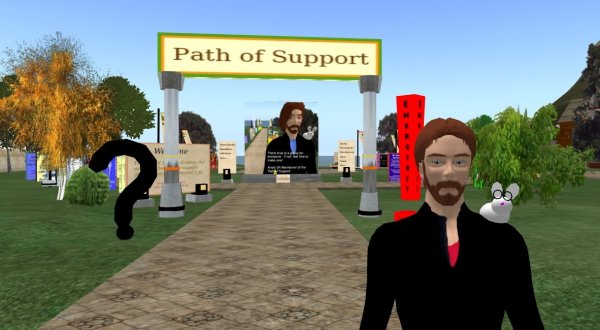
The Path of Support on Healthinfo Island in Second Life offers guidance to people interested in the healthcare support groups in this virtual world. However, in a greater sense, it is offering real healthcare to real people. The Path introduces one to the variety and range of support groups available.
While healthcare in a virtual world seems like something in the far future, it has been going on for years. The Path itself has been helping people find help for about 3 years.
There are many new and old groups featured, some with hundreds of members, others with just a few. Some groups are well know in first life, such as the American Cancer Society. Other groups are less well known outside of Second Life, but may be quite popular in-world, such as the Transgender Resource Center.
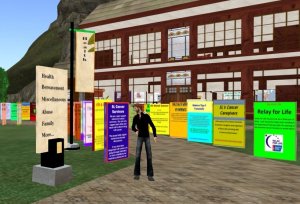
First started as a simple list of people in-world running support groups, the Path was created by Drangea Lynnhurst. Just as the number of groups grew, the amount of posters quickly blossomed. Keeping up with the various groups and activities became increasingly difficult to keep up with, when Knoh Oh (me) took up maintenance and continued development. Healthinfo Island is now under Virtual Ability.
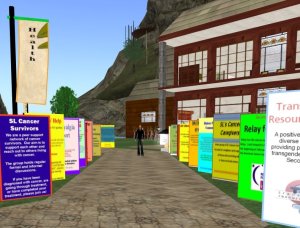
The Path places groups together in common categories allowing one to quickly find what they may be looking for. The posters carry some helpful information, but when touched, bring up a link that goes directly to the group’s page. Issues such as Health, Mental Health, Disabilities, Bereavement, Families, and Addictions are addressed, many with several groups for each category.
At this time, only English speaking groups are represented on the Path. This is entirely the fault of the Path’s maintainer (me) and not due to any intention.
Along the Path are Lanterns of Knowledge that help answer questions such as are online support groups are actually helpful? How to pick the one that is right for oneself, and how to begin one’s own group. There is also an emergency area for people that may be considering, or know someone who may be considering, self harm.
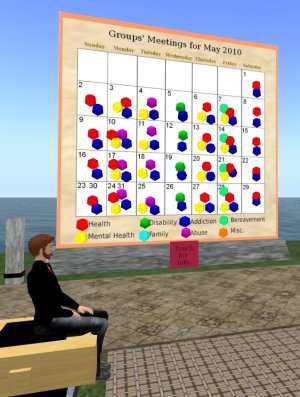
At the far end of the Path is a calendar featuring the types of support groups meeting during which day that month. Touching the calendar brings more information about the actual group, time and day(s) for meetings. It’s online companion can be found at SLHealthy.
Some types of groups, such as Alcoholics Anonymous, one can find a meeting almost every day, and perhaps at least another group member inworld at other times.
There are also several free Path related gifts one can gain from visiting, including a button one can wear and manipulate to show one’s mood. Another area is set aside for groups that have give-aways.
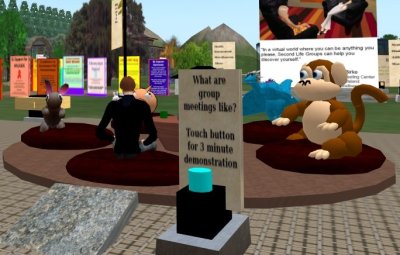
Turning toward the center, the path leads one to a raised platform which features several fake avatars and a simulation of a short support group session. This allows one to experience a brief glimpse into a support group, noting active listening on the part of the leader, as well as issues such as education and not diagnosis, humor, and mutual support.
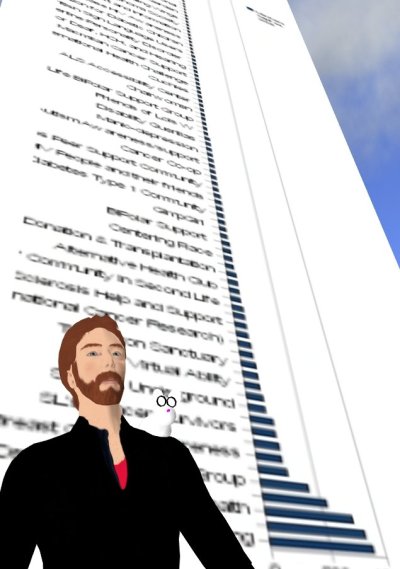
At it’s end, the path helps those who may not find a group to their liking, or simply want more information about groups in general. Several graphs show the the types of groups available and the long-tail effect of membership. Most groups do not have many members, however, that may also allow them to directly address their people’s concerns.
For those involved in support groups but have not looked into running one inworld, my document introducing support groups to virtual worlds may be helpful.
Work on the Path of Support continues. Second Life is a big world, and it can be difficult to keep up with the changes in the healthcare arena. The Path tries to stay current and offer the citizens a way to get the help they are looking for.

Spending some time in the great outdoors and going to hit the trail? You will want to be familiar with trail signs that can communicate to others along the way.
I put together this Trail Signs booklet for some scouts and thought I’d share it here.
Included are some great activities for those down times.
Simply print and follow the directions to make yourself a handy little book.
But wait…there’s more…
Sometimes the muse hits (for better or worse) and creative passions take me a bit too far. Here’s a couple examples for your amusement:
During a LinkedIn discussion on attending events inworld, I went off about folks who merely replicate a PowerPoint presentation, and not utilize all that a virtual world can provide:
For informational presentations, I want bar graphs that spring out of the ground like flowers so my group can walk amongst them. I want line charts that pierce the clouds. I want to have to run for cover from bullet points. I want live data streamed in and doing battle over the audience. I want to sail over oceans of functional requirements using the winds of change, setting course by the stars of milestones…
Edward Tufte would probably faint…
